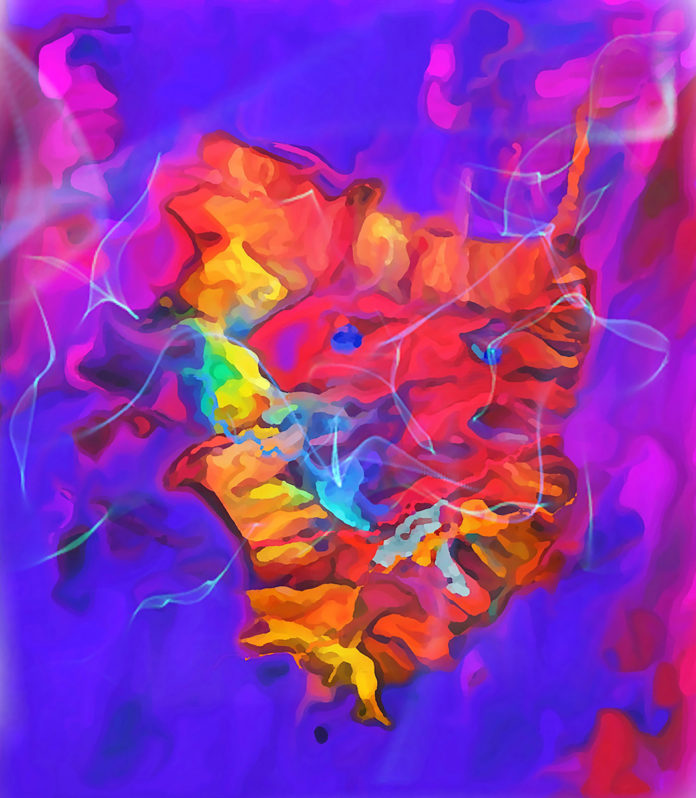
AMERICANS: CURRENT IMAGINARIES
Curated by Dr. Milagros Bello*
At the European Cultural Center/Palazzo Bembo
In the context of the 59th Venice Biennale
The exhibition proposes a creative visual topography of artists of the Americas, shaping out expanded visions of the USA, Central America, and the South American regions. With distinctive spirits and different points of departure, the artists expose diverse imaginaries of 21st Century America. Each artist’s expression reveals a work that emerges from personal mythologies and respective cultural territories. Art represents a complex visual tissue that summons the artist’s inner and outer global and local dimensions. Art forms a magical outcome that visually accounts for the artist’s experience crystalizing society, whether figurative or abstract.
This American group’s seminal diversity stems from a Continental multifaceted complexity, comprised of Beatriz Sanchez (Venezuela), Carola Orieta-Sperman (Argentina/USA), Clark Medley (USA), Diana Ocampo (Colombia), Eliana Barbosa (Brazil/USA), Grehyni Narvaez (Venezuela/USA), Karina Matheus (Venezuela/UK), Lorien Suarez-Kanerva (USA), Matt Jacobs (USA), Meg Cogburn (USA), Mercedes Inaudi (Venezuela/USA), Ricardo Carbonell (Venezuela), Robert Brandwayn (Colombia), and Sergio Cesario (Brazil/USA).

Flowers and Crystals (2020)
20x20x3 inches
50¾x50¾x7¾ cm
Mixed media (objects and paper collage) on PVC

20x20x3 inches 50¾x50¾x7¾ cm
Mixed media (objects and paper collage) on PVC
Beatriz Sanchez (Venezuela) presents profuse compounds of objects and mixed media collages of high tenure. The artist exposes personal mythologies and recollections of life experiences in a complex chain of articulated signifiers from domesticity to womanhood, from nature to culture, as a lifetime’s soul-searching endeavor.

12x12x1 inches 30½x30½x2½ cm
Photography on acrylic
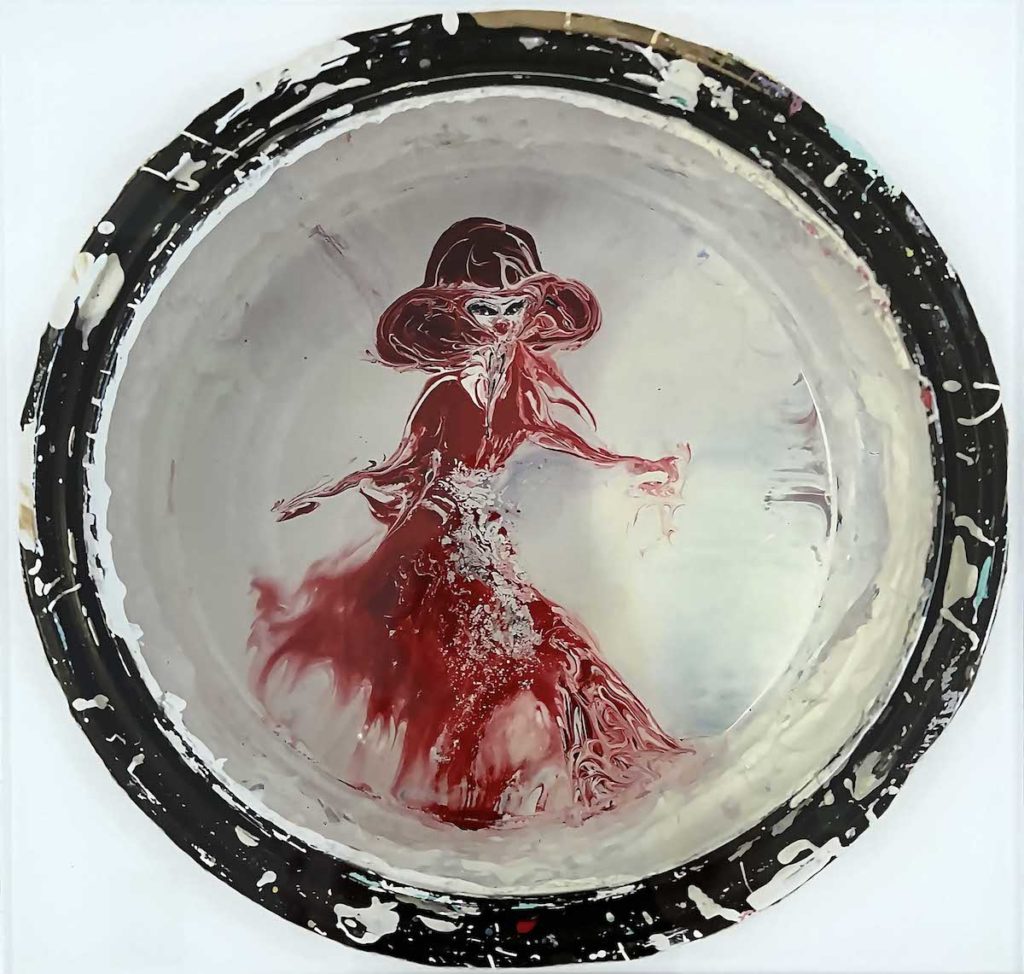
12x12x1 inches 30½x30½x2½ cm
Photography on acrylic
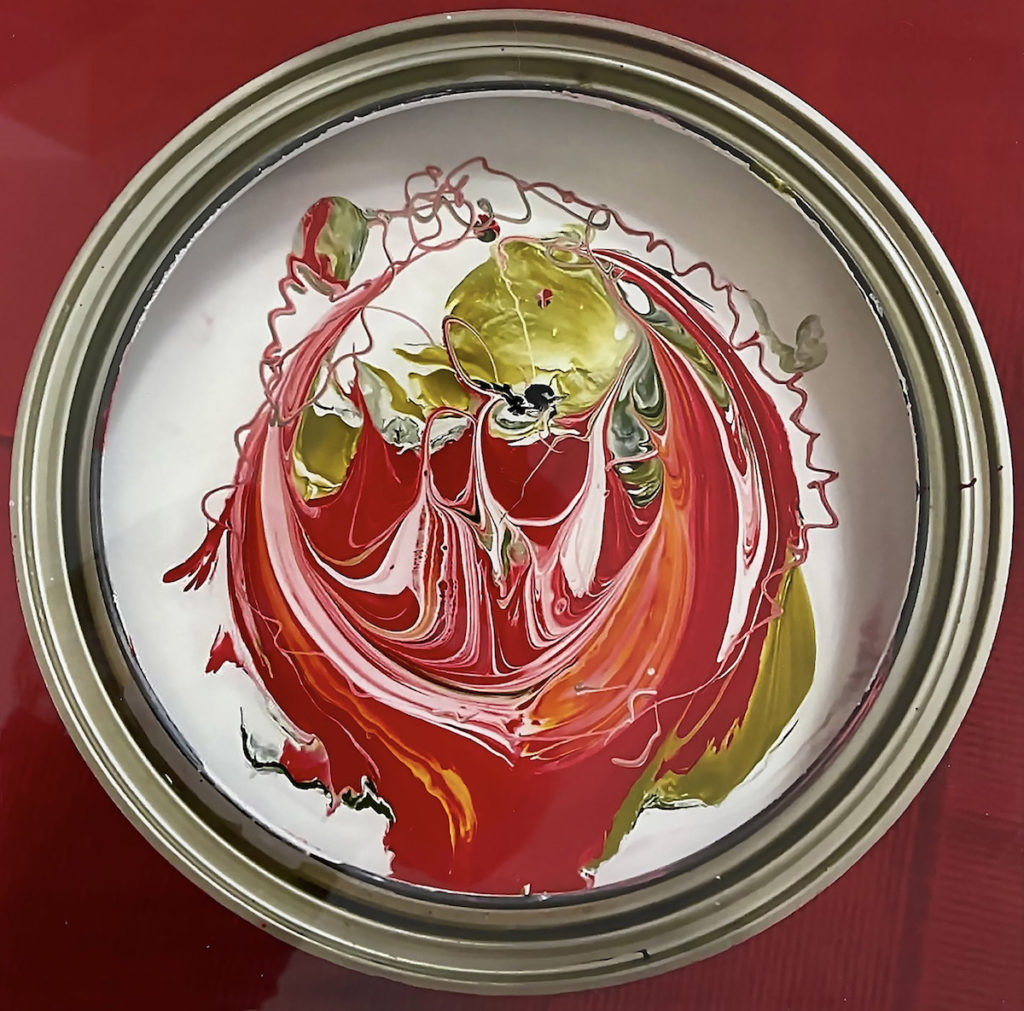
12x12x1 inches 30½x30½x2½ cm
Photography on acrylic
Eliana Barbosa (Brazil/USA) exposes critical de-figured and ghostly characters as a crystallization of the pandemic – collapsing and outgoing. The image is produced in a reconstructed process, combining outlines of ephemeral silhouettes painterly dropped over a surface of a large can and then photographed before the image dissolves onto the white paint.
The photographic digital capture becomes the final work of this transposed hybrid method of
creation.
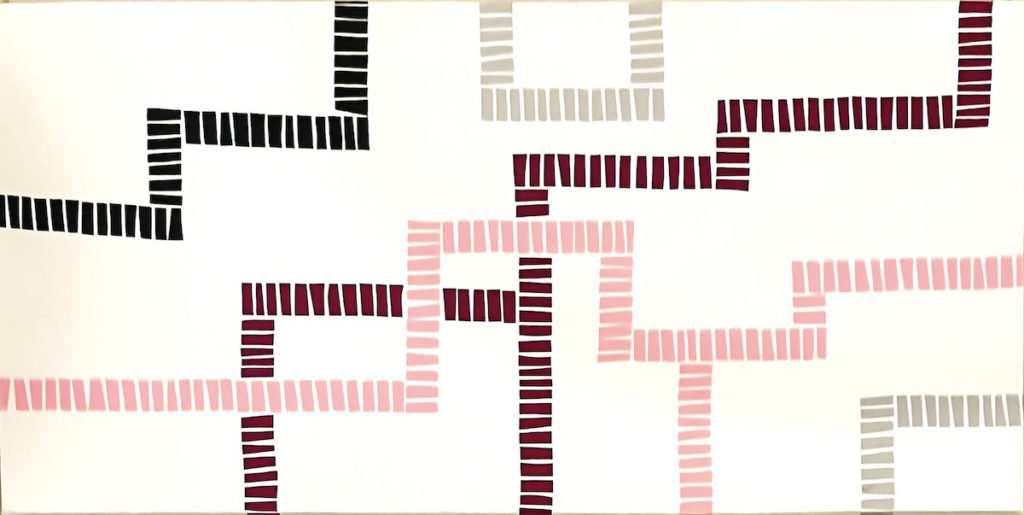
12x24x1½ inches 30½x61x3¾ cm
Collage on canvas
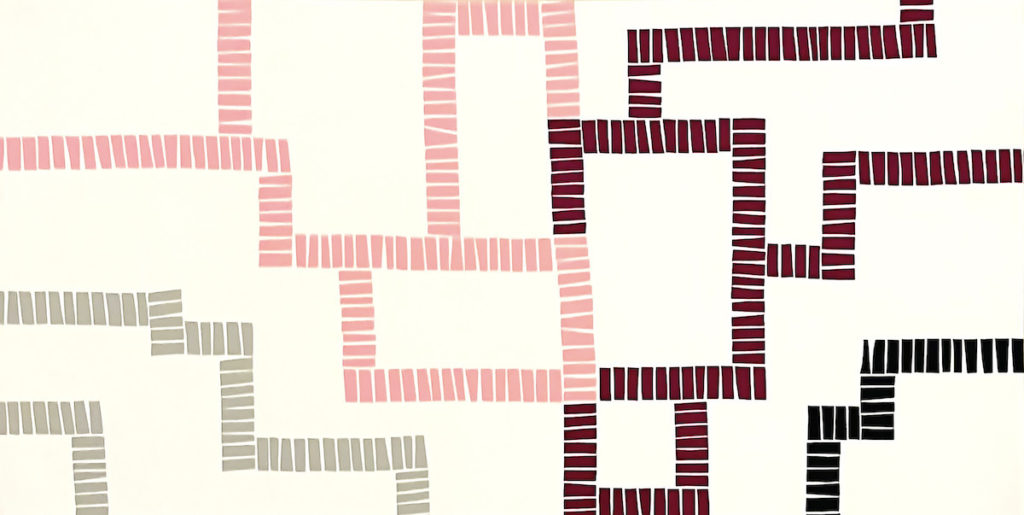
12x24x1½ inches 30½x61x3¾ cm
Collage on canvas
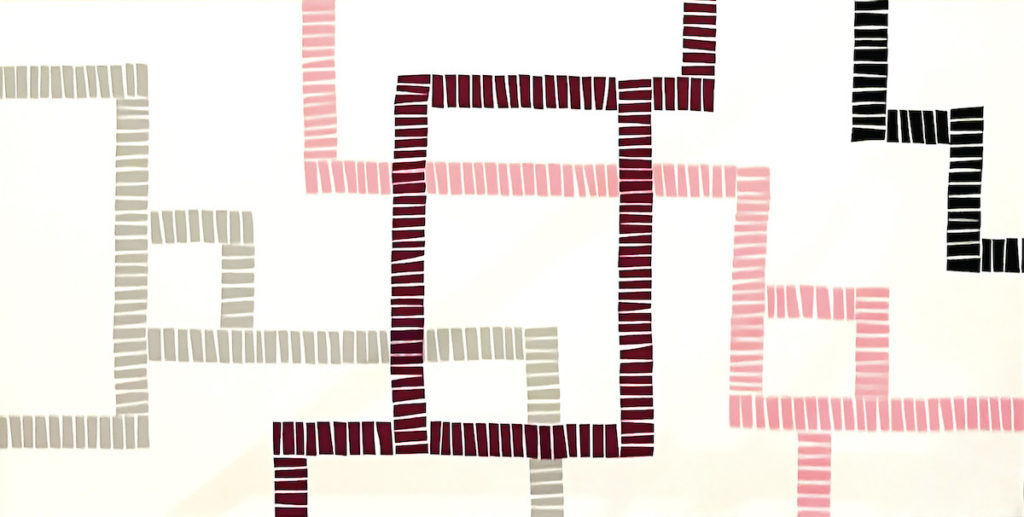
12x24x1½ inches 30½x61x3¾ cm
Collage on canvas
Ricardo Carbonell (Venezuela) assembles rhythmic tensions and dynamic collisions in a pure minimal approach to non-objective art. He evokes imaginary trials and trajectories and masters an abstract collage technique through cut-outs of electric tape strips that he ordered in mathematical sequences and geometrical shapes over a canvas.
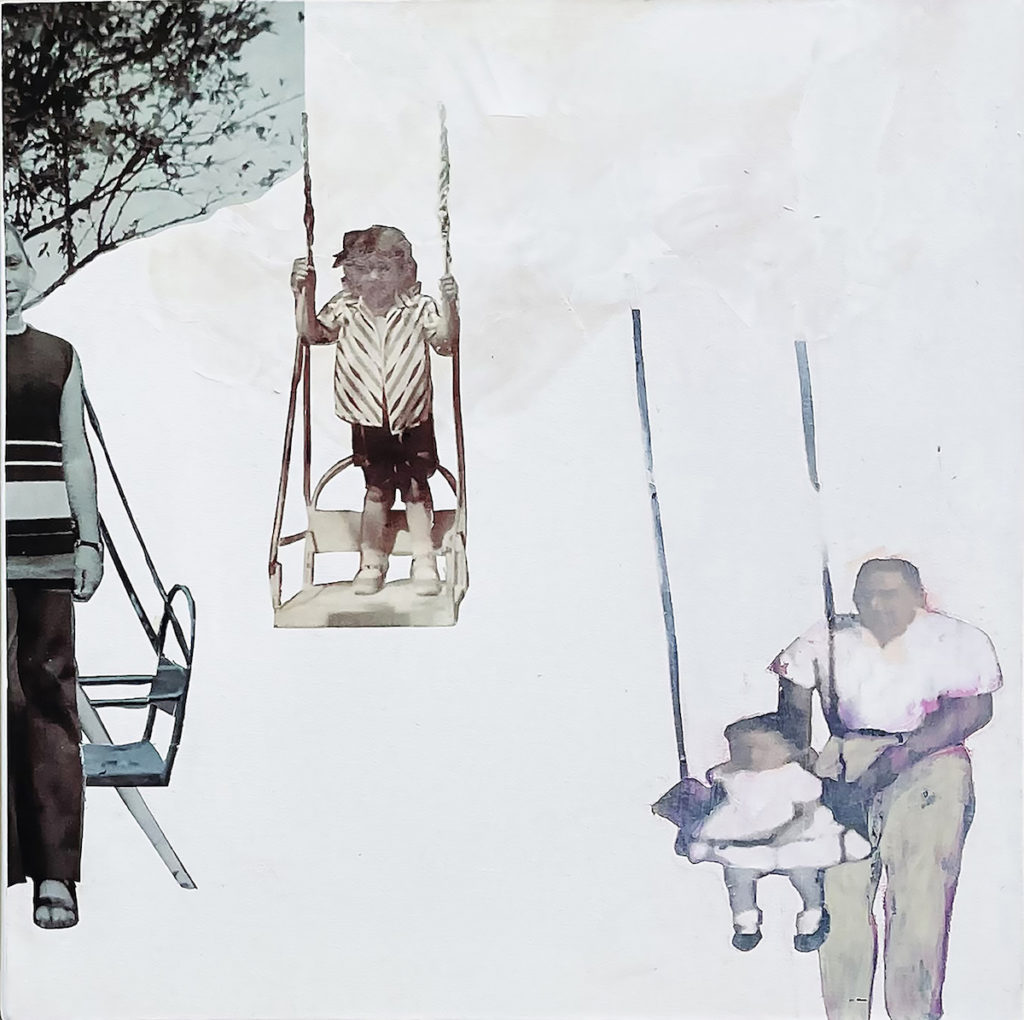
12x24x1½ inches (diptych) 30½x61x3¾ cm
Mixed media
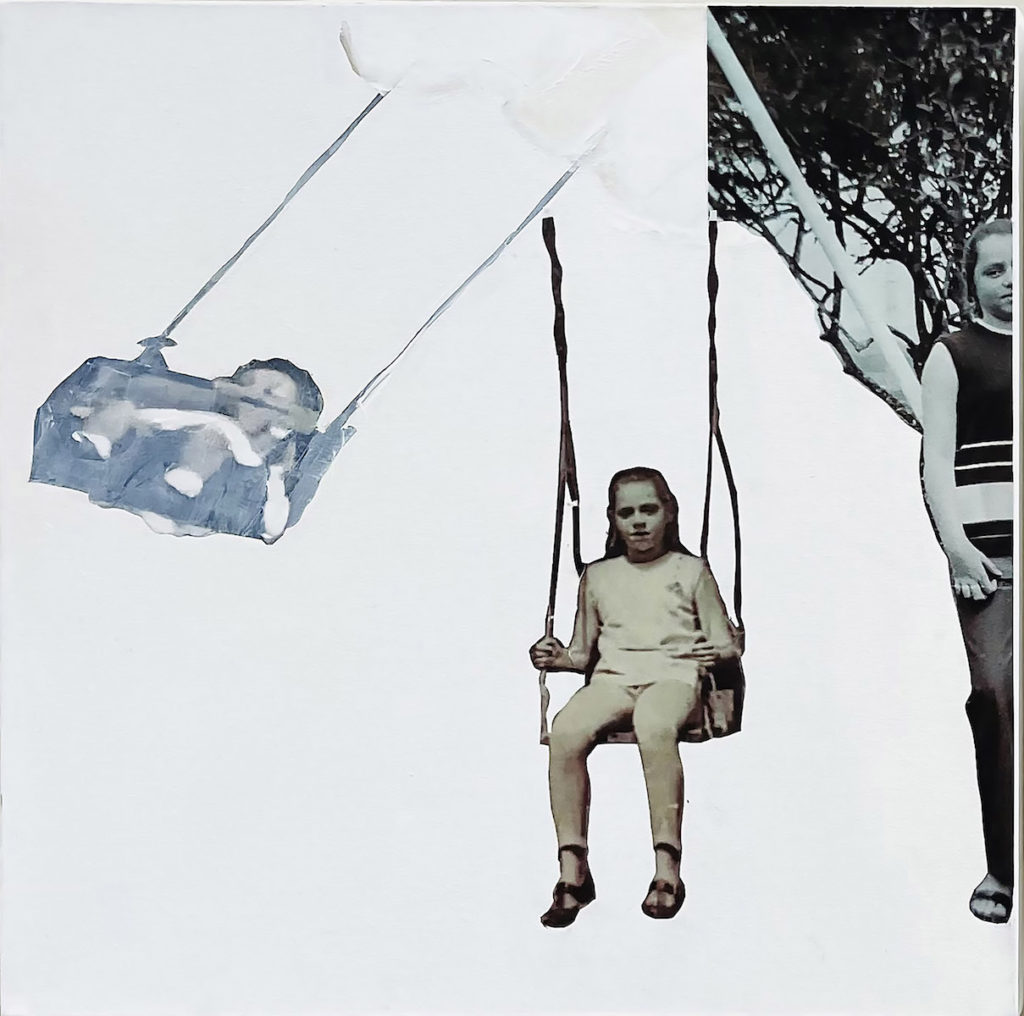
Diana Ocampo (Colombia) recalls personal narratives and autobiographical displays photo-collaged from childhood photos. Painterly erasures over minimal white backgrounds fade out and recover memories of her lost father in fragmented scenes. With a twist of introspection, the artist sets up the lasting sense of eternal human ties.
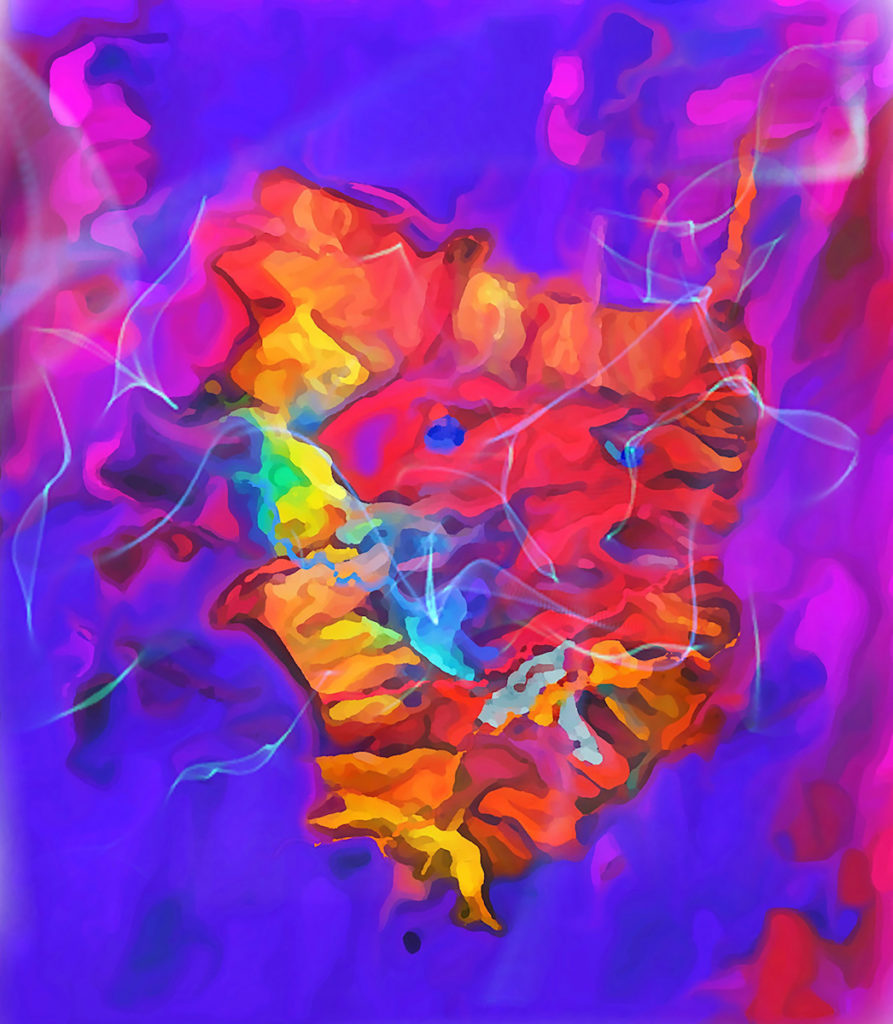
36x36x1 inches 91x91x2½ cm
Photography mounted under acrylic / plexiglass Ed 1 of 5
Sergio Cesario (Brazil/USA) proposes a digitally post-produced photographic image that re- purposes his original creative imaginary. The initial photograph is de-composed as traces of a fictional plane through multiple allusions and intimations. Diluted multicolor, serpentine lines and space dissolutions in vibrational matrixes transpose reality into invisible pictorial realms of hidden introspection.
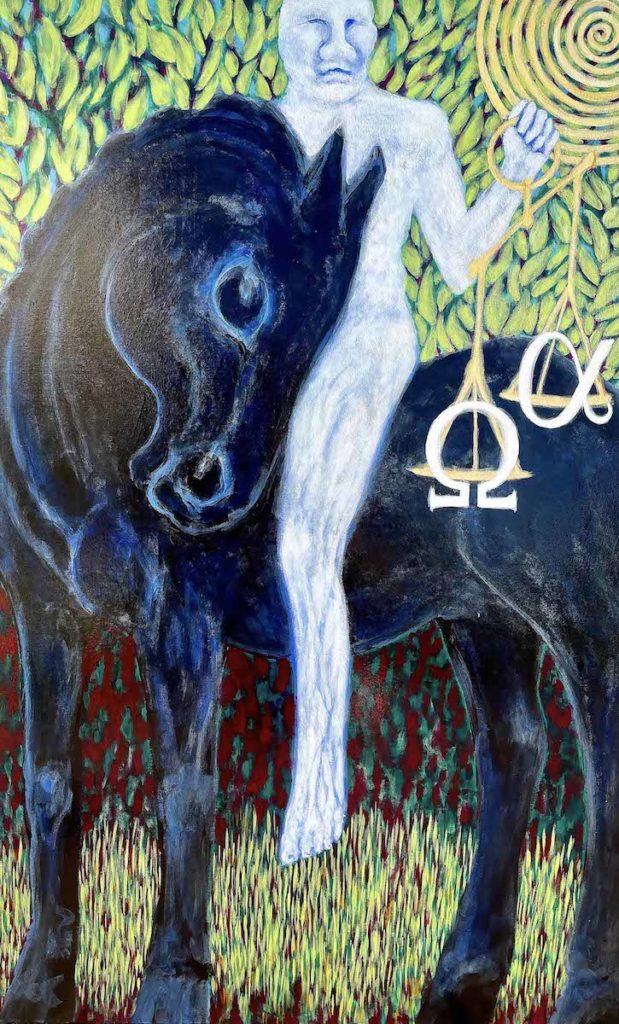
30x48x1½ inches 76x123x3¾ cm
Acrylic on canvas
Meg Cogburn (USA) visually interprets biblical figures as hopeful visions of regeneration and spiritual enlightenment for humanity in cryptic messages. Figurative characters of dream-like imagery ooze in the pictorial scene, assuming transformative roles. In Horses of the Apocalypse’s Famine, the horse rider appears as a stone-like personage, and his horse is rigidly crashing on the ground. Still, they are surrounded blissfully by buoyant green growth and the alpha and omega renaissance emblems.
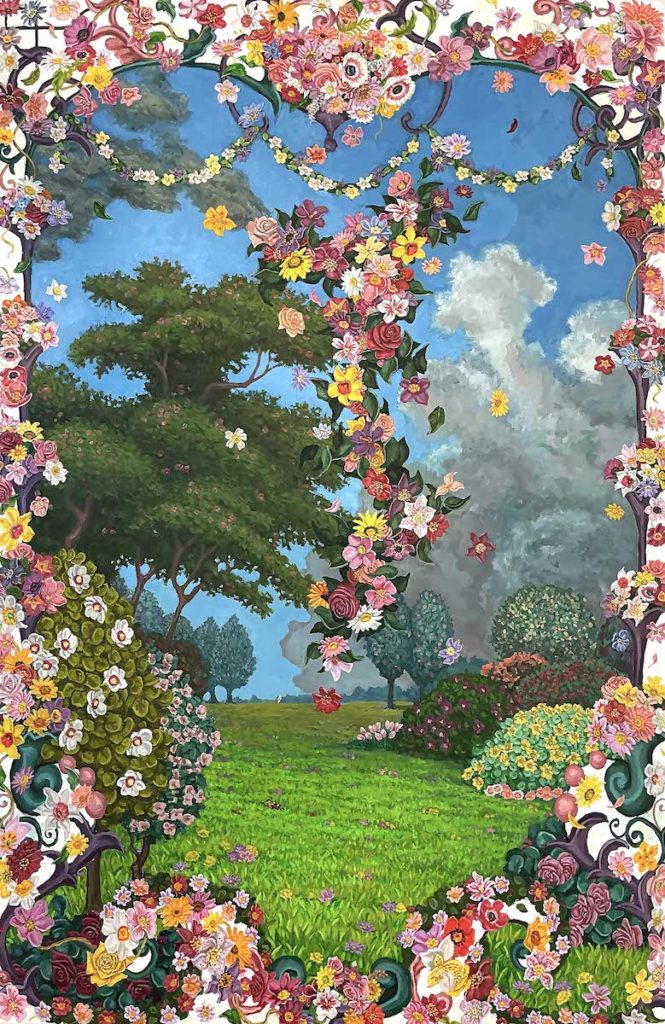
36x24x1 inches 91½x61x2½ cm
Oil on wood

8x10x1 inches 20×25½x2½ cm
Oil on wood

8x8x1 inches 20x20x2½ cm
Oil on wood
Matt Jacobs (USA) shows small sumptuous, lush nature paintings, reshaping the concept of the horror vacui of the Baroque period. His works are rhapsodic landscape visions of highly sensual profuse foliage arranged in pastoral settings of abundant greenery with a contrasting focally meaningful figure such as his seductively luscious cupcake.
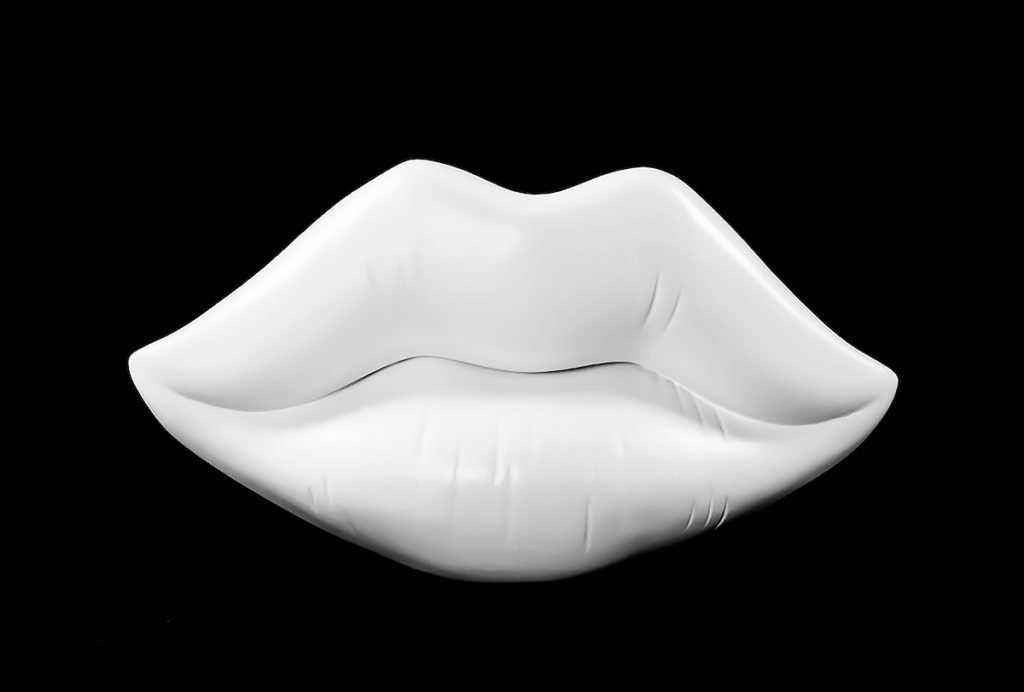
7¾x15x4 inches 20x38x10 cm
Fiberglass sculpture
Grehyni Narvaez (Venezuela/USA) presents a solid tridimensional allusion to the feminine spirit in our Western culture. The sculpture shows a sensual and tactile representation of a woman’s white lips, an all-encompassing signifier of allurement and desirability. The body part, in its whiteness, projects a magnetism to the viewer through silent eroticism and glamour.
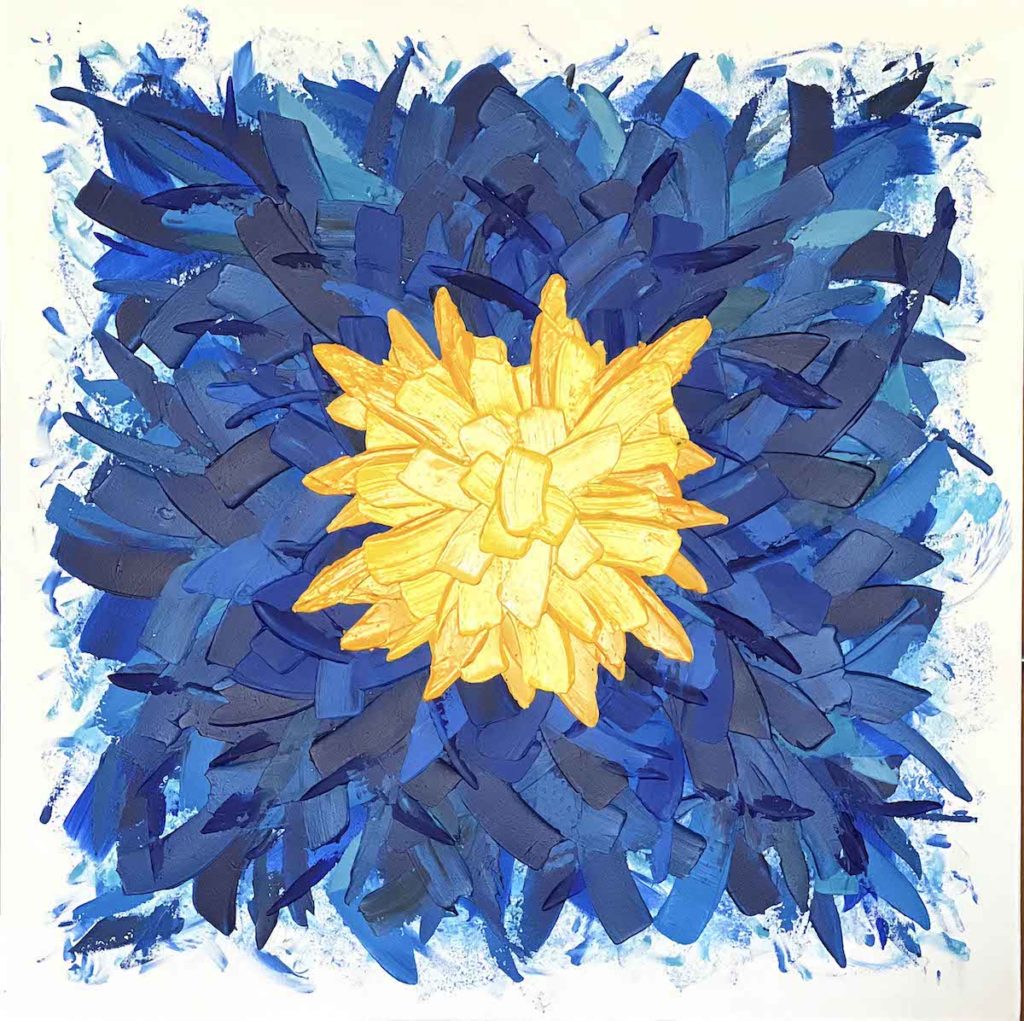
6x36x2 inches 91x91x5 cm
Acrylic / Flashé on canvas
Karina Matheus (Venezuela/USA) proposes abstract colorful brusque, and tangential brushstrokes over a canvas that reveals her inner drives and spiritual meditations. It is a nonrepresentational approach that evokes musical tonalities and emotional feelings, imaginary sounds, and timbres in different tempos that project expressive dimensions of the spirit.

16x16x2 inches 40½x40½x5 cm
Mixed media on wood
Mercedes Inaudi (Venezuela/USA) presents COVID Monalisa, a mixed media collage of intertextual references to the current COVID pandemic. A defiant masked woman with a challenging gaze towards calamity appears on the right, while a group of red shapes on the left allude to the virus. A busy composition with phrases, fonts, and writings, collated and finished with mixed media, wax, and encaustics, reveals the intensity of the interrelated concerns of the artist.
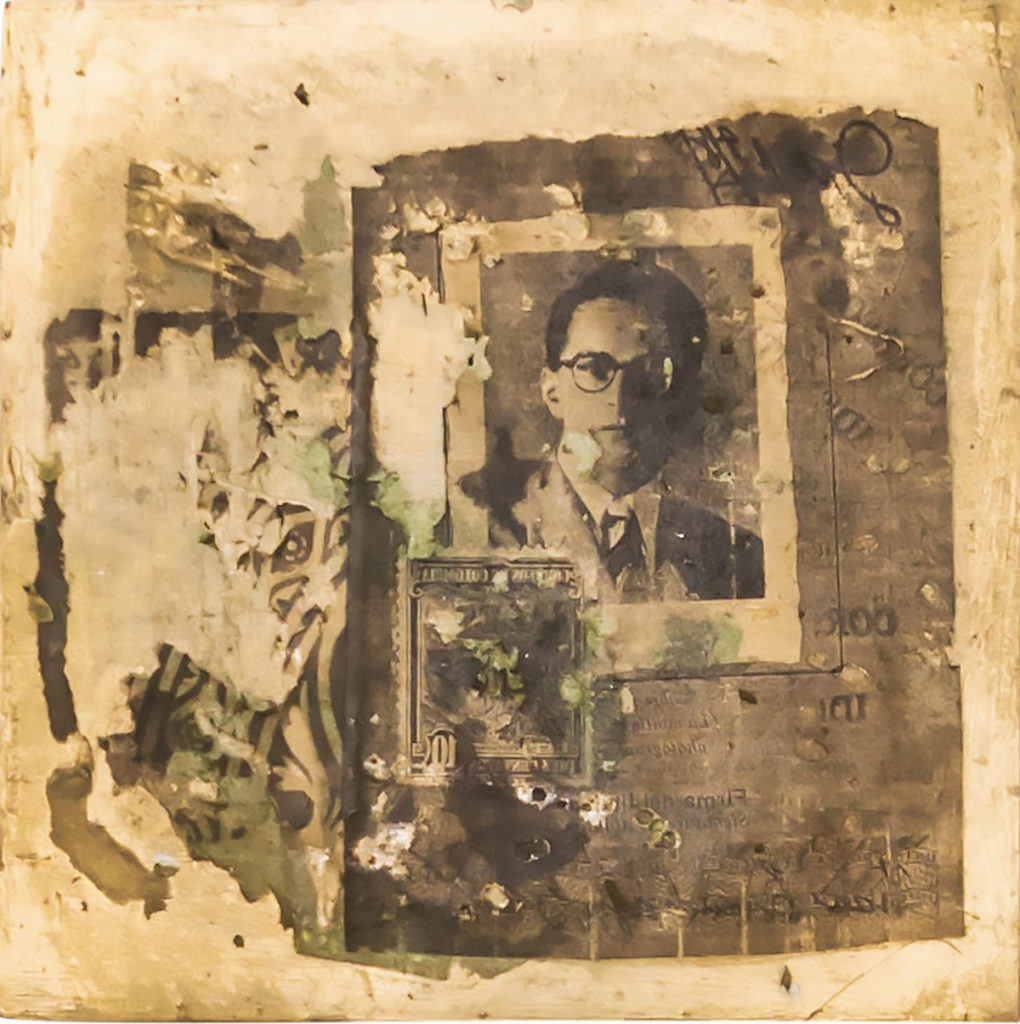
8x8x1½ inches 20¼x20¼x3¾ cm
Mixed media on wood
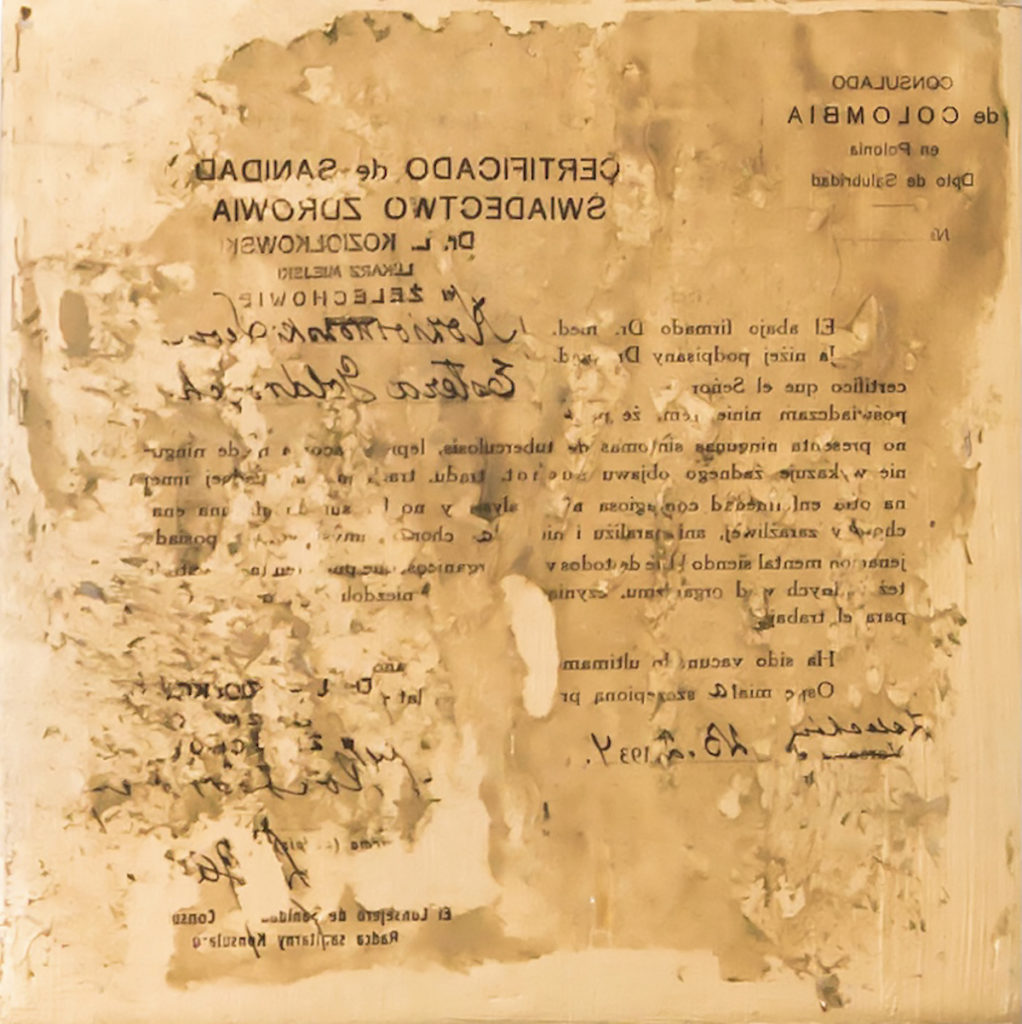
8x8x1½ inches 20¼x20¼x3¾ cm
Mixed media on wood
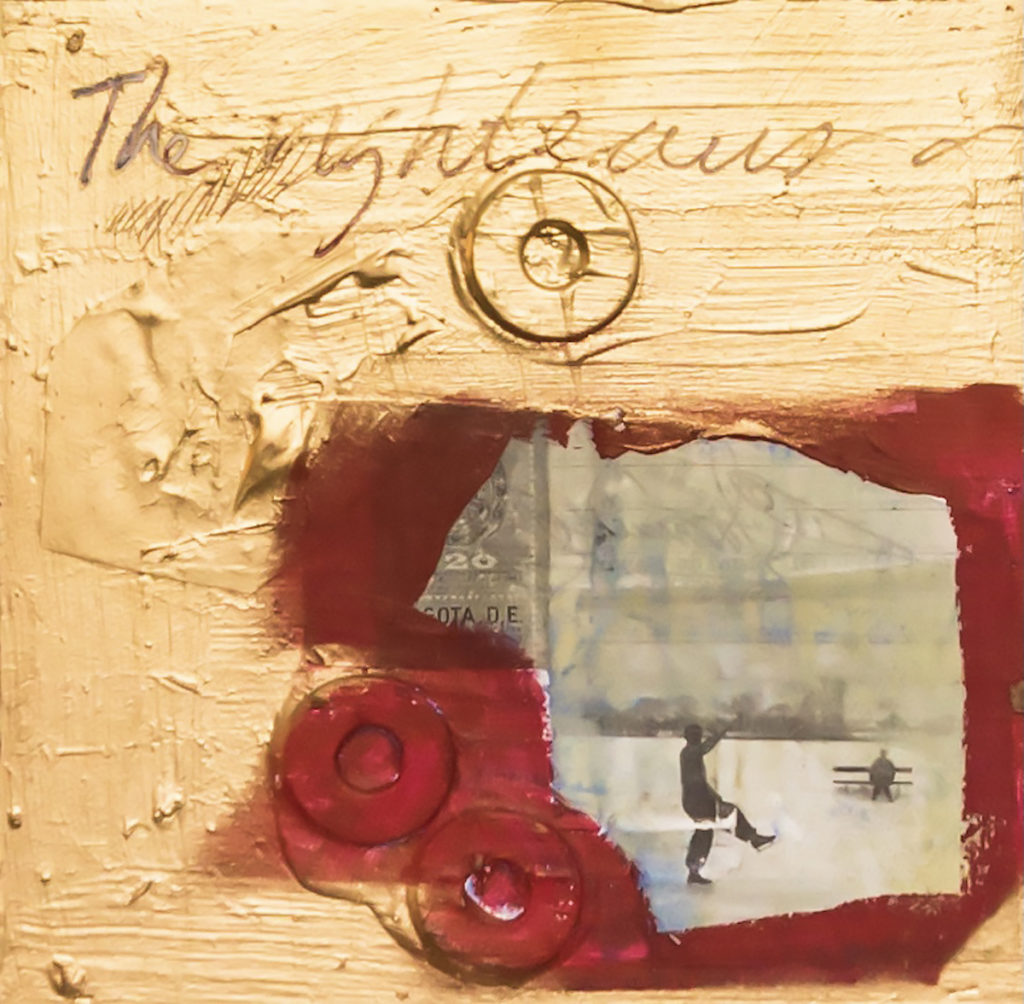
8x8x1½ inches 20¼x20¼x3¾ cm
Mixed media on wood
Robert Brandwayn’s (Colombia) mixed media and gold leaf works show images of loss and memory tracing the past as an infinite recourse from the collective memory of the Jewish people’s ordeals. Ghostly photos and ancestral writings resurge into the present, where seals and scriptures interlace as testaments of resilient voices revived generationally for perpetuity.
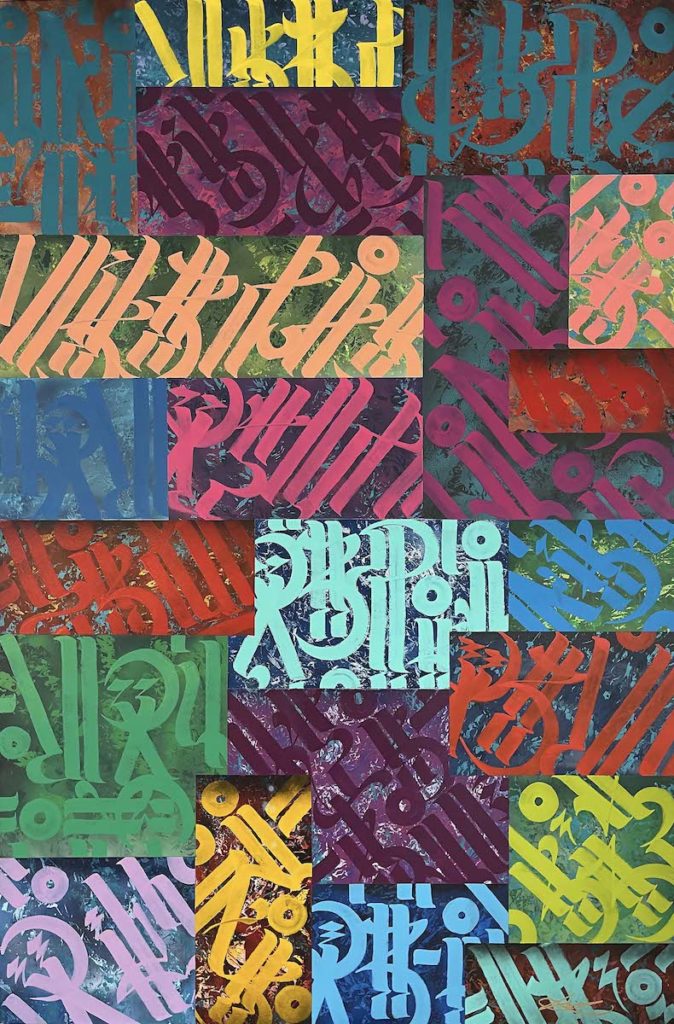
72x48x1½ inches 183x109x3¾ cm
Mixed media
Clark Medley (USA) presents an Arabesque-like alphabet that conjures Chinese, Arabic, Japanese, Judaic, and Hindi calligraphies as new glyphs with existential resonances of personalized scripts. Collapsing turns and twists of visual writing appear in imaginary fonts with pulsating repetitive movements that transcribe the artist’s perceptual and auditory experiences.

33x20x20 inches 84¾x50¾x50¾ cm
Laser cut acrylic
Carola Orieta-Sperman’s (Argentina/USA) laser-cut acrylic sculpture robustly expands towards the outer negative space in incessant turns of flamboyant allure. In the Flame Mandarine Series, cosmic fire energy materializes as continuous movements of spiral ascension. Evanescent organic forms of enduring energy propagate as fractal attractors echoing systemic cosmic chaos.
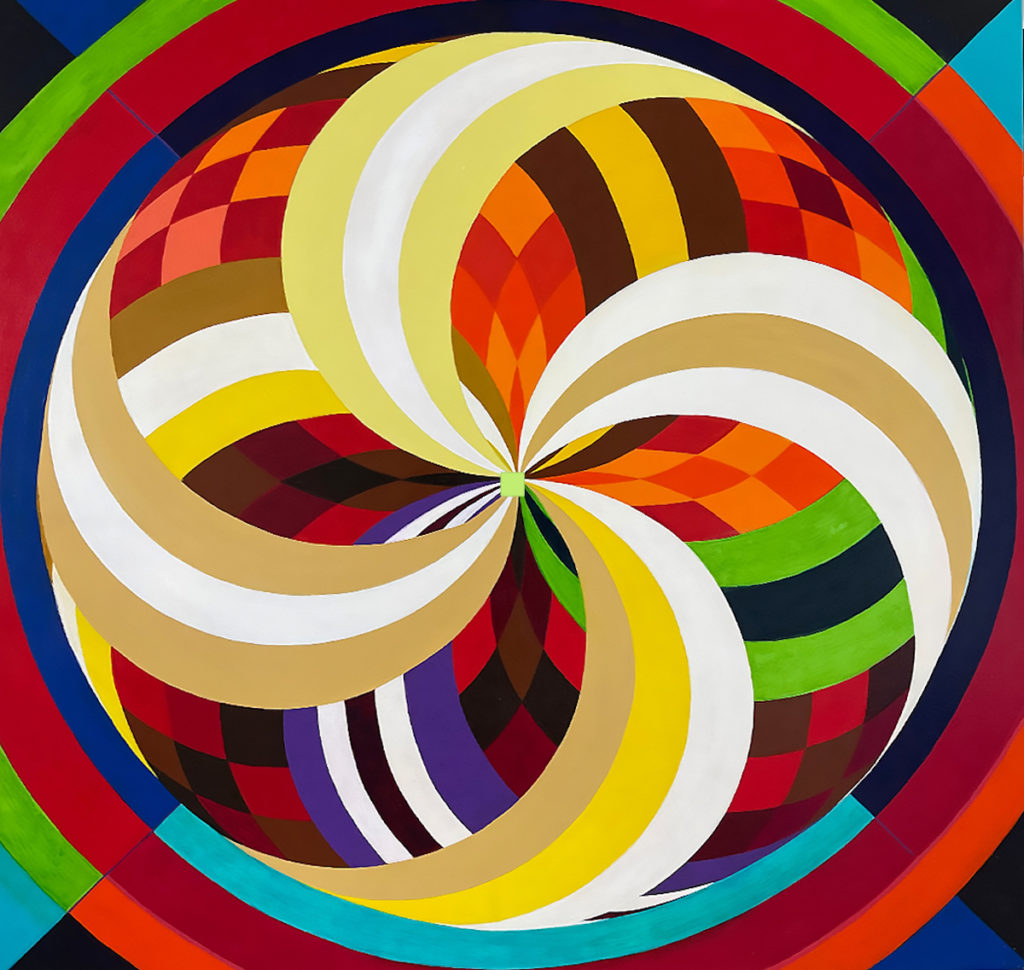
40x40x2 inches 101½x101½x5 cm
Acrylic on canvas
Lorien Suarez-Kanerva’s (USA) imposes networks of spirals, rectangles, and concentric circles in reiterative integrated patterns that expand and retract in astounding visual interactions. On a pulsating rhythm, its movement’s continuum appears superimposed through imaginary blades that open from a center point in centrifugal directions towards the outer space as a unceasing rotational undertaking.
Milagros Bello, PhD
Curator of the show
*Curator Dr Milagros Bello holds a PhD in Sociology with a doctoral thesis in Sociology of Art
from Sorbonne University (Paris VII-Jussieu), Paris, France. Dr Bello is an art critic member of
the International Association of Art Critics (AICA). Dr Bello has curated numerous shows in
contemporary art locally and nationally; she is an art writer for local and international art
magazines and a former Senior Editor of Arte Al Dia International art magazine. Since 2000,
Bello has taught as a professor of art and critical theories at the Florida International University,
Florida Atlantic University, Miami International University (The Art Institute/Miami), and the
Istituto Marangoni/Miami. From 2010-2020, she was the director and chief curator of Curator’s
Voice Art Projects in Miami, Florida/USA, which pivoted to the new MIA Curatorial Projects
due to the pandemic.



